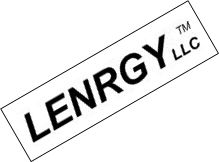Cold fusion is a controversial phenomenon that has the potential to meet a substantial part of the world’s energy needs. It may also reduce the global climate change crisis. It was announced at a press conference on March 23, 1989 by two highly regarded chemists, Martin Fleischmann and Stanley Pons. However, it was rejected by mainstream science within a year or so. On the other hand, it has continued to be pursued by many researchers worldwide. Despite its status as a pariah science, cold fusion may yet fulfill its potential for the benefit of humankind.

Dr. Martin Fleischmann (Left) and Dr. Stanley Pons at the 1989 Press Conference
The information on this website has been developed primarily for those who are unfamiliar with cold fusion. The website has been created by LENRGY, LLC. The name is a contraction of “LENR” (Low Energy Nuclear Reaction, another name for cold fusion) and energy. The name focuses on energy as the main potential benefit of cold fusion. LENRGY’s mission is to pursue the benefits of cold fusion realization. It is owned and operated by Thomas Grimshaw, Ph.D., who has over 19 years of experience working on cold fusion issues.
Cold Fusion Publications and Reports
A primary way that Dr. Grimshaw contributes to the cold fusion field is by conducting projects and preparing reports. He has authored more than 90 publications, presentations, and reports on cold fusion. His major interest is in conducting policy analysis for the LENR case, including both policies for research support and realization of LENR benefits and policies for proactive planning to deal with anticipated adverse secondary impacts. In recent years many of his presentations and reports have been on documenting the research and accomplishments of cold fusion investigators.
Cold Fusion Questions and Answers
Cold fusion is a paradox. Despite its massive potential benefits and the strong evidence that it is a real phenomenon, it continues to be a pariah science. Newcomers to the field no doubt have many questions. The attempt is made here to anticipate the most critical questions – and provide answers. Cold fusion is a controversial subject, and there are many opinions about it. This website is no exception – it has been developed from the premise that cold fusion’s promise is great enough, and its evidence is strong enough, that it should be rigorously pursued for the benefit of humankind.
LENRGY Overview
LENRGY accomplishes its mission by focusing on four areas – analyzing public policy, documenting LENR research records, assisting investigators and other interested parties, and providing information and outreach. Dr. Grimshaw has extensive experience in these four areas and has prepared more than 90 publications, reports and presentations.
Dr. Grimshaw’s Journey to Cold Fusion
Dr. Grimshaw learned of the March 1989 cold fusion announcement while fully engaged in his environmental career. He followed the ensuing events closely, but – like most people – lost his engagement after it was rejected by mainstream science. He went on with his work in environmental protection and contamination cleanup.
Years later, Dr. Grimshaw changed his career to energy policy by pursuing the Master’s degree at the LBJ School of Public Affairs. He wondered, “Whatever happened to cold fusion?” In seeking the answer, he was astounded at the amount of research and other work being done in the field in spite of its having been rejected years before. Public policy for cold fusion was just the thesis topic he was looking for!
After writing “Evidence-based Policymaking for Cold Fusion” and receiving the Master of Public Affairs degree in 2008, Dr. Grimshaw continued his cold fusion work at the LBJ School. He then became affiliated with two other research units at The University of Texas at Austin (UT) – the Center for International Energy and Environmental Policy (CIEEP) and the Energy Institute. He also formed LENRGY, LLC and has pursued his cold fusion interests both at UT and in his new company.

Dr. Grimshaw Began His Cold Fusion Second Career with Policy Analysis.
2008 Conference Poster Entitled “Public Interest Arguments for Cold Fusion Policy Change”
Professional Background
Thomas Grimshaw has a Ph.D. in geology and had a long and successful career in environmental protection and cleanup before changing to energy policy (and cold fusion) at the LBJ School of Public Affairs. His bachelor’s degree is in geological engineering. His training in geology and engineering, and his long environmental experience, have equipped him well for the pursuit of cold fusion.
The concept of plate tectonics was introduced in 1912 but was not accepted for nearly 50 years, when new information provided verification. A similar situation apparently exists for cold fusion. As a geologist who lived through though the scientific revolution of plate tectonics, Dr. Grimshaw has the perspective required to engage with controversial new phenomena like cold fusion.
Testimonials
During his 16 years of work in cold fusion, Dr. Grimshaw has given presentations at many cold fusion conferences. He has networked actively and has come to know many of the researchers. Several of them have provided testimonials of his contributions to the field. One example, from Dr. David Nagel, is shown below.
Tom Grimshaw has long made two kinds of stellar contributions to the advancement of the science of Low Energy Nuclear Reactions (LENR). They are creative contributions to the literature about LENR on policy and related matters, and the archiving of the published and unpublished works of many scientists and organizations in the field. Tom has been the leader regarding needed policy by governments and other organizations on the development and exploitation of LENR as a new source of clean energy for humankind. Scientists have two tasks, to learn new things and to communicate them to others. Their published and posted reports, and very importantly, unpublished data, are invaluable for advancement of fields like LENR. Tom’s formal projects on documenting and making publicly available the works of leading LENR researchers contribute to both the advancement and history of the field.
David Nagel, The George Washington University, Washington, DC
